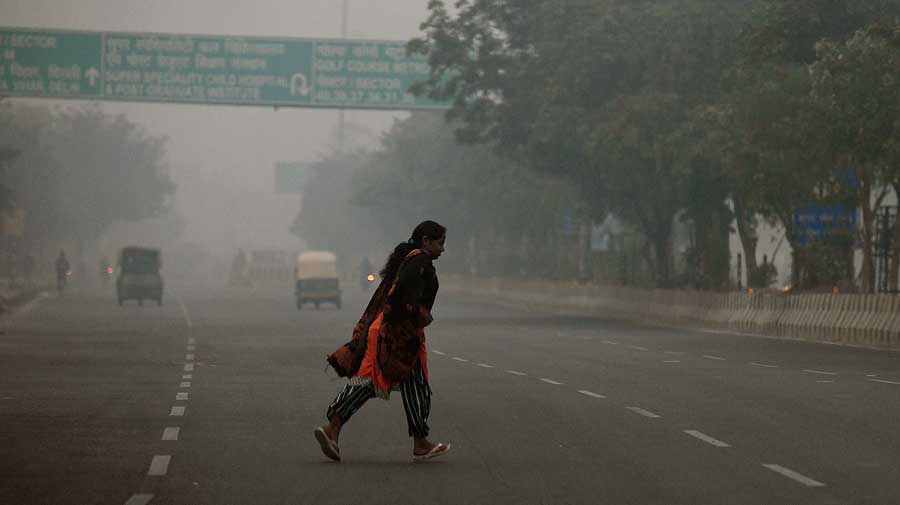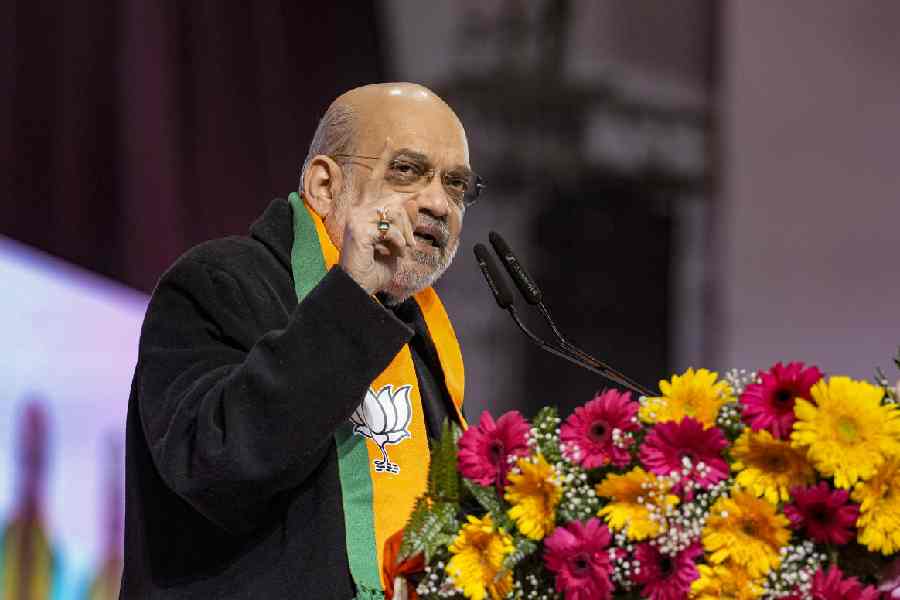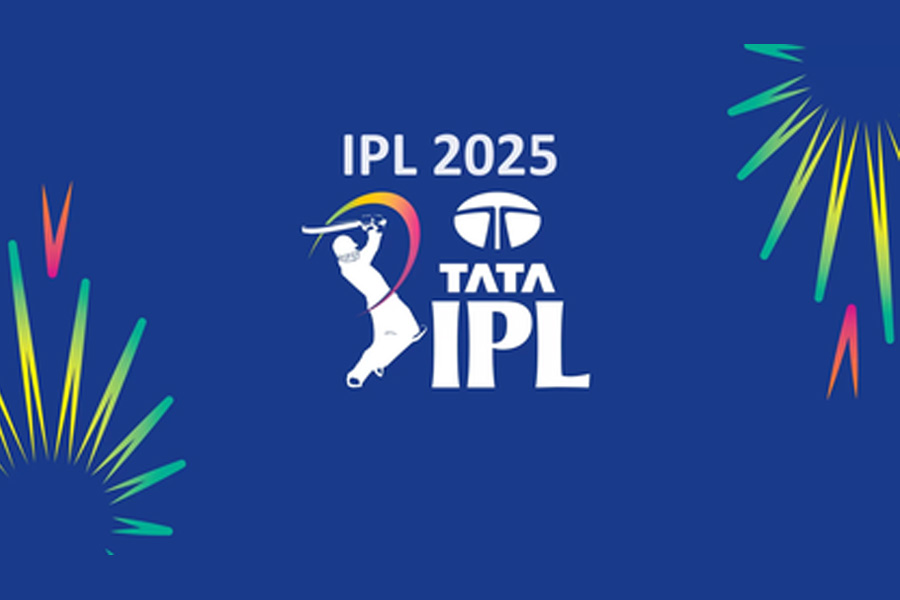Delhi’s air quality turned “severe” on Diwali with stubble burning accounting for 32 per cent of the city’s PM2.5 pollution and calm winds worsening the situation as they allowed accumulation of pollutants, weather officials said.
The ministry of earth sciences’ air quality monitor, SAFAR, said, “Even a small increase in local additional emissions is likely to have significant deterioration impact on Sunday and Monday.”
It said peak levels of PM10 and PM2.5 are expected between 1am and 6am in case of additional internal emissions.
Earlier, it had said the PM2.5 concentration in Delhi on Diwali is likely to be the “lowest” in the past four years if no firecrackers are burnt.
The city recorded an overall AQI (air quality index) of 414 on Saturday, which falls in the “severe” category.
The 24-hour average AQI was 339 on Friday and 314 on Thursday.
Delhi recorded a 24-hour average AQI of 337 on Diwali last year (October 27), and 368 and 400 in the next two days. Thereafter, pollution levels remained in the “severe” category for three days on the trot.
In 2018, the 24-hour average AQI (281) on Diwali was recorded in the “poor” category. It deteriorated to 390 the next day and remained in the “severe” category on three consecutive days thereafter.
In 2017, Delhi’s 24-hour average AQI on Diwali (October 19) stood at 319. It, however, slipped into the “severe” zone the next day.
This time, the India Meteorological Department (IMD) has said that a fresh western disturbance is likely to increase the wind speed and improve the air quality in Delhi-NCR post Diwali.
Light rain is likely on Sunday under the influence of a western disturbance. It is still to be seen if it is enough to wash away pollutants, Kuldeep Srivastava, head of the IMD’s regional forecasting centre, said.
“However, Delhi-NCR’s air quality is likely to improve post Diwali due to an expected increase in the wind speed on Sunday,” he said.
V.K. Soni, head of the IMD’s environment research centre, said calm winds, smoke from farm fires and firecrackers emissions may push the air quality to the “severe” zone on Diwali night.
The wind speed is expected to pick up thereafter and the wind direction will be east-southeasterly, he said.
There will be a significant improvement in air quality by November 16, Soni said.
The Air Quality Early Warning System for Delhi also said the situation is likely to “improve significantly” on Sunday.
“Under the influence of a western disturbance, isolated rainfall over plains of northwest India and adjoining central India is likely on Sunday. The predominant surface wind is likely to be coming from East-Southeast direction of Delhi with wind speed up to 20kmph,” it said.
“Generally cloudy sky, light rain, thundershowers accompanied with gusty winds (speed 30-40kmph) is likely towards afternoon-evening on Sunday,” the central agency said.
The Commission for Air Quality Management (CAQM) on Friday directed the CPCB and states concerned to ensure there is no lapse in the implementation of the National Green Tribunal’s directions in view of the air quality scenario during the Diwali period.
“In pursuance of NGT order dated November 9 and considering the concerns of air quality scenario in the NCR and its adverse health impact, the commission directed CPCB, state governments and authorities concerned for strict compliance of the directions of NGT, with zero tolerance on violation,” it said.
The National Green Tribunal (NGT) had on Monday imposed a total ban on sale or use of all kinds of firecrackers in the National Capital Region from November 9 midnight to November 30 midnight, saying “celebration by crackers is for happiness and not to celebrate deaths and diseases”.












